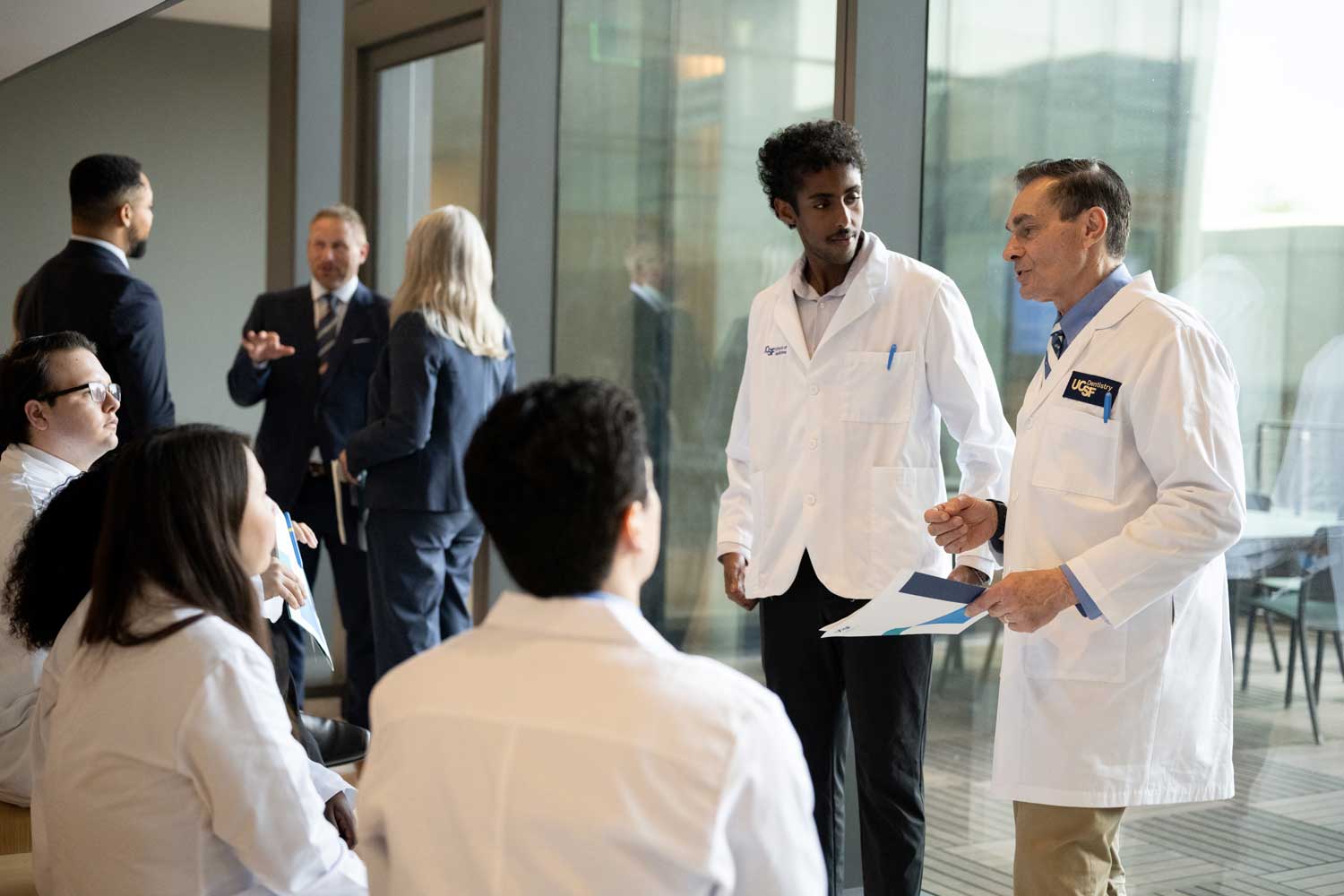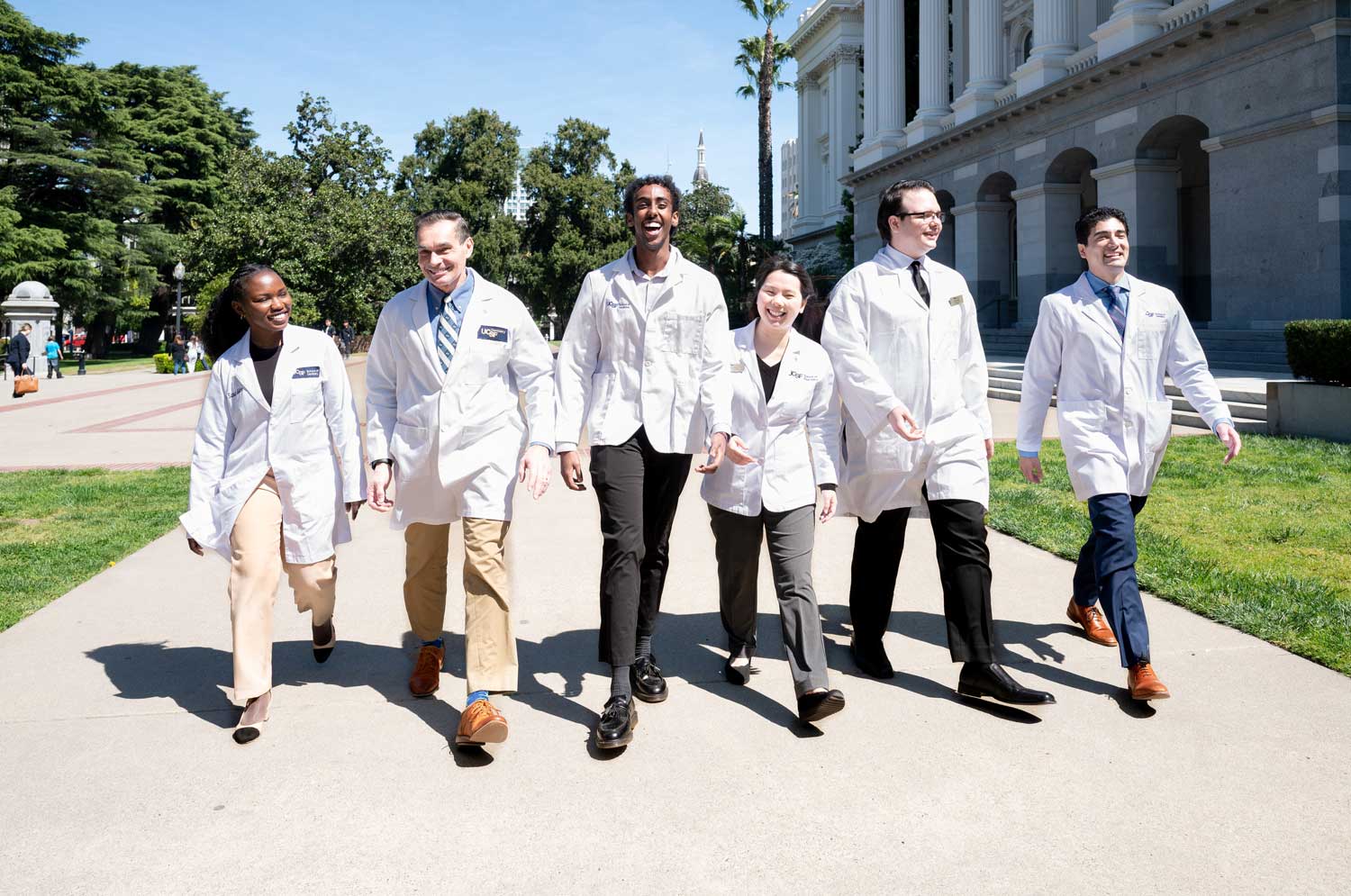Guled Abdi didn’t know that becoming a physician was an option for him. No one close to his immigrant family was a physician, and he didn’t see any real-life role models for black physicians from low socioeconomic backgrounds. But when he was a freshman in college, he learned that a friend’s older brother was accepted to medical school – and Abdi’s whole world opened up.
His friend’s brother was the first in his family to graduate high school and college and attend medical school – like Abdi would be. “We talked a lot about the realities and challenges of pursuing careers in medicine, especially as Black men. He suggested I shadow a Black physician who was working in an underserved community that was like my own in Kansas City, Missouri. I realized I can make medicine and science accessible to people that come from my background, whether it’s shared languages or experiences,” says Abdi, who was born in Somalia. He immigrated to the U.S. before his first birthday and grew up in Kansas City with his single mother and two of his five siblings.
Adbi is now a first-year medical student at UCSF, the medical school he chose because of the Program in Medical Education for the Urban Underserved (PRIME-US). PRIME-US’s mission is to help diversify the health care workforce and the program currently supports about 75 current students at UCSF School of Medicine and the UC Berkeley-UCSF Joint Medical Program who are committed to working as physicians with urban underserved communities in California. The innovative curriculum examines causes of health care discrepancies, provides tools for addressing them, facilitates robust mentoring opportunities and helps make their medical education financially attainable. Over the course of five years, students earn a medical degree as well as a master’s degree, typically in public health or public policy.
“I chose UCSF so I could work on community outreach projects and be part of a diverse student body, while getting an outstanding medical education.”
Guled Abdi, First-Year UCSF Medical Student

Grow diversity in health care
“As someone who comes from a low socioeconomic background, it is important to me to work in the communities that gave me the tools to become who I am today. PRIME-US is giving me the training, resources and education I need to be successful working in underserved communities,” says Abdi, who will earn his medical degree from UCSF and a master’s in Health and Medical Sciences from UC Berkeley’s School of Public Health. “I chose UCSF so I could work on community outreach projects and be part of a diverse student body while getting an outstanding medical education.”
“It’s so important to have diversity in physicians so they can serve the community better,” says Heather Hervey-Jumper, MD, assistant clinical professor and director of PRIME-US, which began in 2006. “When a physician speaks your language, shares your culture or understands what your community is going through or the challenges you face, you get better health care.”
Percent of physician and dentist workforce by ethnicity
Black people are 13.4% of the U.S. population, 5% of U.S. physicians, and 3.8% of U.S. dentists. Hispanic people are 18.5% of the U.S. population, 5.8% of U.S. physicians, and 6% of dentists. Native Americans or Alaska Natives are 1.3% of the U.S. population, 0.3% of U.S. physicians, and an even smaller percent of dentists.
Percent of physician and dentist workforce by ethnicity
Black people are 13.4% of the U.S. population, 5% of U.S. physicians, and 3.8% of U.S. dentists. Hispanic people are 18.5% of the U.S. population, 5.8% of U.S. physicians, and 6% of dentists. Native Americans or Alaska Natives are 1.3% of the U.S. population, 0.3% of U.S. physicians, and an even smaller percent of dentists.
According to the Association of American Medical Colleges and the American Dental Association, Black people are 13.4% of the population, but just 5% of the physician workforce and 3.8% of dentists. Hispanic people make up 18.5% of the U.S. population, but only 5.8% of the physician workforce and 6% of dentists. Native Americans or Alaska Natives make up 1.3% of the U.S. population, but only 0.3% of physicians and an even smaller percent of dentists. The diversity numbers for pharmacists are not much different.
One of the strengths of PRIME-US is its mentoring program, which pairs students with more experienced PRIME-US medical students as well as with alumni in different stages of their careers. “We have a lot of one-on-one mentoring opportunities but also larger events that expand our students’ and alumni’s circles and help them plan for the next stages of their careers,” Hervey-Jumper says.
Outreach to underserved communities
The vast majority of PRIME-US graduates work in safety net hospitals in California. While many are in primary care, every subspecialty is covered. Many work at Priscilla Chan and Mark Zuckerberg San Francisco General Hospital and Trauma Center, a hub for underserved patients seeking care, as well as at UCSF Benioff Children’s Hospital Oakland, one of only three children’s hospitals that accept Medi-Cal in Northern California.
Abdi values the learning opportunities he’s had so far in the community, including having a mentor who works at the Orthopaedic Institute at UCSF Mission Bay and working with a network of barber shops in Oakland and San Francisco to educate community members about hypertension and local resources for healthy living. With his sights set on providing orthopedic trauma surgery in a safety net setting, Abdi says the PRIME-US program is giving him skills he’ll need and a community that lifts him up when he needs it.
“I was nervous about starting med school and connecting with other students. Sometimes I felt like my story was unique, but now I know in the best way that it’s not unique,” Abdi says. “There are others who have walked the same path. It gives me hope that I can keep going, and I draw on their experiences and apply them to myself.”

Expand PRIME-US to reach more people
Abdi and a few other UCSF students traveled to Sacramento this spring to advocate for the expansion of PRIME-US to include dental and pharmacy students. Dental student Samuel Aguilar spoke to 10 legislators that day about how the program would help prepare him to return home to his Huntington Park community in Los Angeles to provide care to Spanish-speaking patients who will be his neighbors, friends and family.
“I took for granted how much patients trusted my dad,” says Aguilar, whose father and uncle work together in a Huntington Park medical and dental practice his grandfather first owned. When Aguilar finishes dental school, he plans to join them.
“Now that I’m working with patients in dental school, I see how talking to and relating to my Spanish-speaking patients sets so many of them at ease. They relax their bodies, breathe and talk slower, and we connect. Patients have better health outcomes and a higher quality of life when they relate to their health care providers, even when our backgrounds aren’t an exact match.”

